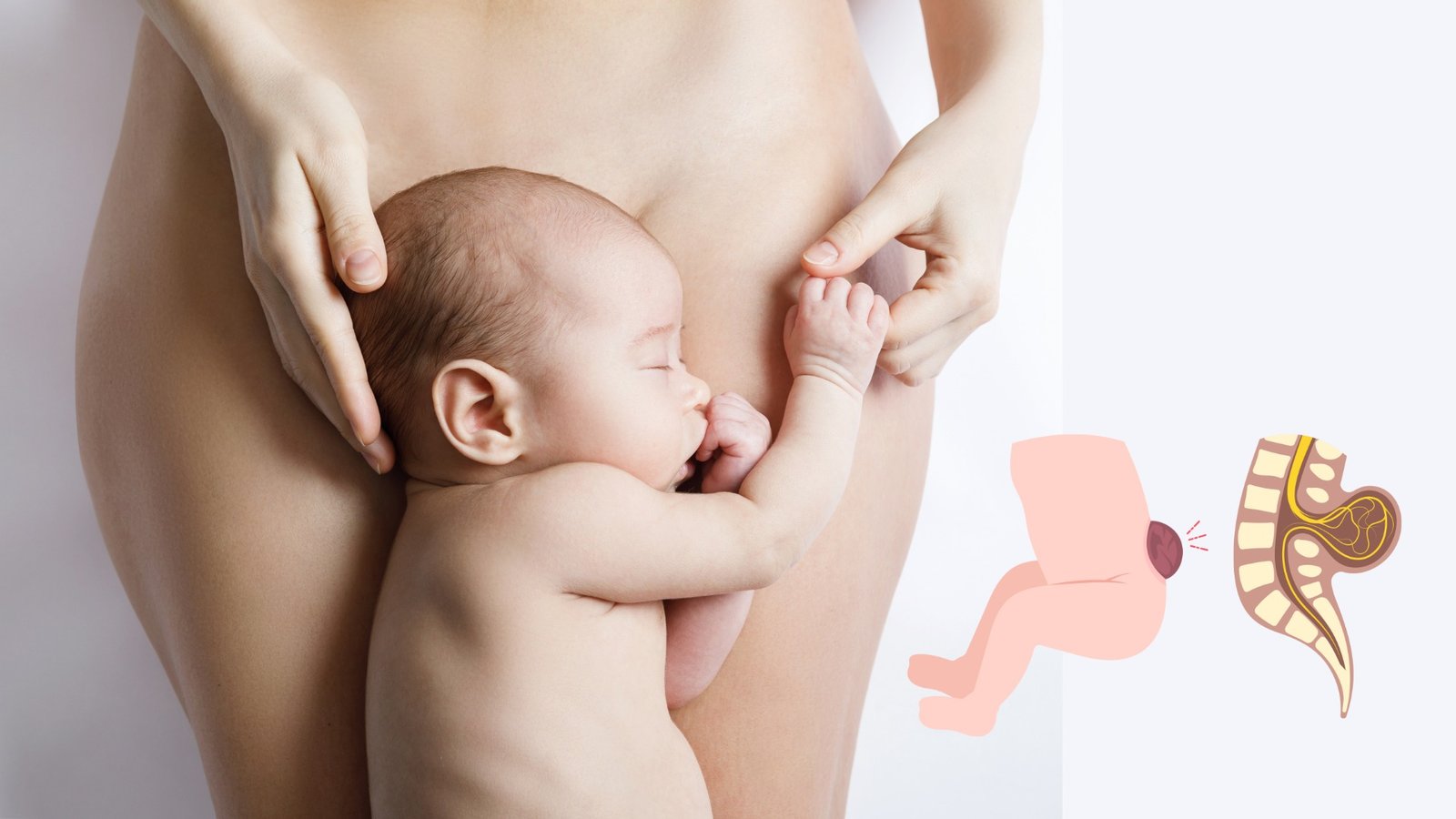Spina Bifida (SB) is the most common permanently disabling birth defect that is associated with life. Approximately 4-5 individuals in every 1000 births in India have SB.
It’s a type of neural tube defect (NTD) that occurs when a baby’s neural tube fails to develop or close properly – the literal meaning for Spina Bifida is “split spine.” Typically occurring within the first 28 days of pregnancy while the neural tube is forming, SB often occurs before a woman knows she is pregnant.
Commonly referred to as the “snowflake condition” of birth defects because no two cases are the same, Spina Bifida can range from mild to severe. The severity depends on everything from the size of the opening to the location on the spine. SB has a waterfall effect and causes multiple issues like Neurogenic bladder and bowel, orthopaedics issues and in some cases, cognitive issues.
What Are The Causes Spina Bifida?
There is no conclusive data on what is the actual cause. Doctors and scientists believe that a complex mix of genetic, nutritional and environmental factors contribute, to cause this condition. Are you planning to become parents, or has your doctor informed you that your unborn child will have Spina Bifida? At Sasha, we have compiled resources and information that might benefit you.
Can Spina Bifida Be Detected Before Birth?
In most cases yes. There are three tests, but it is important to remember that no medical test is perfect and the results are not always 100 per cent accurate.
SB can be detected in utero through prenatal screening and diagnostic tests. Here are some common methods:
Ultrasound
A detailed ultrasound scan of the foetus, usually performed between 18 and 22 weeks of pregnancy, can often detect physical signs of SB.
Maternal Serum Alpha-Fetoprotein (MSAFP) Test
A blood test during, the 16th to 18th weeks of pregnancy. This blood test measures the level of alpha-fetoprotein (AFP) in the mother’s blood. High levels of AFP can indicate a neural tube defect like SB.
Amniocentesis
Amniocentesis may be recommended if the MSAFP test results are abnormal. This involves taking a sample of the amniotic fluid to check for elevated levels of AFP and other markers.
What Are The Different Types of Spina Bifida
The three most common types of SB are:
Myelomeningocele (Meningomyelocele), also called Spina Bifida Cystica
This is the most severe form of SB. It occurs when the spinal cord and its protective covering (the meninges) protrude through an opening in the spine, forming a sac or cyst. In simple words, a fluid-filled sac is visible, on the baby’s back at birth, containing parts of the spinal cord and nerves. This condition can lead to significant neurological impairments and physical disabilities. A large percentage (70-90 %) of children with Myelomeningocele also have a condition where fluid accumulates in the brain, requiring surgical intervention. This happens because the fluid that protects the brain and spinal cord can’t drain like it should. This fluid builds up, causing pressure and swelling. Without treatment, a person’s head can grow too big and may lead to brain damage.
Meningocele
Meningocele is a type of spina bifida where a sac protrudes through a gap in the spine. This sac contains the meninges (the membranes covering the brain and spinal cord) and spinal fluid, but it does not include neural tissue. There is usually no nerve damage in individuals who have Meningocele and may have minor disabilities. Unlike more severe forms of SB, the spinal cord remains in its normal position within the spinal canal.
Spina Bifida Occulta
Spina bifida Occulta (SBO), is the mildest and most common form of spina bifida. People often call it “hidden Spina Bifida” because about 15 percent of healthy individuals have it without knowing. SBO usually does not cause harm and has no visible signs. The spinal cord and nerves are usually normal and remain in the spine. Imaging tests for other conditions often incidentally discover SBO.
Typically, doctors do not recommend treatment unless symptoms develop. However, in a small group of people with SBO, pain and neurological symptoms may occur.
Other variations of Spina Bifida include:
- Occult Spinal Dysraphism
- Lipomyelomeningocele
- Fatty Filum Terminale
- Split Cord Malformation
- Terminal Myelocystocele
How is Spina Bifida treated?
Treatment for Spina Bifida depends on the severity of the condition. Here are the ways doctors treat SB before or shortly after birth.
- Surgeons usually operate on a child with Meningomyelocele within two to three days of birth. This prevents infections and helps save the spinal cord from more damage.
- Surgeons usually operate on a child with Meningocele, and more often than not, the child remains unparalyzed. Most children with this condition grow up without complications, but doctors should check them because they could have other serious problems, too.
- Spina Bifida Occulta typically does not require treatment.
- A child with OSD should see a surgeon. Most experts believe that early surgery is necessary to prevent further damage to the nerves and brain as the child grows.
Prevention
While experts do not know the exact cause, research shows that women of childbearing age should take folic acid before and during the first three months of pregnancy. Because half of the pregnancies across the globe are unplanned, medical experts recommend that women take a vitamin with 400 mcg (0.4 mg) of folic acid daily before conception and during the early weeks of pregnancy. Women in general, should take this dosage of folic acid during the years of their lives when there is a possibility of them bearing a child.
Additionally, women who have a child or sibling with SB, have had an affected pregnancy, or have SB themselves should take 4000 mcg (4.0 mg) of folic acid for one to three months before and during the first three months of pregnancy. Research shows the likelihood of having a second baby with SB is about three per cent. It’s important to understand that experts do not entirely understand neural tube defects like SB, and parents’ actions do not cause SB. Experts recommend that adults with SB and couples who already have a child with SB and are planning for another child talk with their OB-GYN about their risk factors and ways to reduce the risk.
Please Note
The information provided on our website is not intended as medical advice for any individual. Since specific cases may differ from the general information presented, SASHA recommends consulting a qualified medical or other professional for personalized advice.
About the Author
Raul/DJ Vivek
Meet Vivek Bharadwaj, a remarkable individual who has defied the odds and soared to new heights despite living with Spina Bifida. As the founder of the Sasha Foundation, Vivek tirelessly advocates for others facing similar challenges. His unwavering commitment to support, awareness, and empowerment had made a lasting impact on the Spina Bifida community.
FAQ
How many people in India have Spina Bifida (sb)?
Around 4-5 out of every 1000 births in India have Spina Bifida.
What is the most severe kind of Spina Bifida (sb)?
Myelomeningocele.
Is there a cure for Spina Bifida (sb)?
No, there is not.
My unborn child has Spina Bifida (sb), what should I do?
The best option is to terminate the pregnancy.
What is the lifespan of someone with sb?
Most people with Spina Bifida have a normal lifespan. In some cases, due to complications, a person can lose their life.
Can people with Sb live a normal life?
Yes, many people with Spina Bifida can lead fulfilling lives with proper medical care, physical therapy, and support. The level of independence and quality of life can vary depending on the severity of the condition.
Can a person with Sb walk?
People with spina bifida get around in different ways. These include walking without any aids or assistance, walking with braces, crutches, or walkers, and using wheelchairs.
Can people with Sb find love?
People with disabilities, in general, face challenges in finding love. However, there are many cases where individuals have found love and gotten married.
Can people with Sb exercise?
Yes, people with spina bifida can exercise, and regular physical activity is important for their health and well-being.
Can people with Sb play sports?
Yes, people with spina bifida can play sports, but it depends on the type of sport and the individual’s abilities. Individuals with Spina Bifida who don’t experience mobility issues can participate safely in almost every sport.
Can people with Spina Bifida (sb) participate in sexual activity?
Yes, many adults with Spina Bifida participate in sexual activity and enjoy fulfilling sexual relationships. The symptoms of Spina Bifida vary greatly depending on the location of the neural tube defect and the severity of the condition.
Many of the people in a study with 345 individuals, reported engaging in a variety of sexual behaviours in the past year. More than half (60%) reported masturbating in the past year, 70% reported affectionate behaviours with a partner such as kissing, cuddling, or holding hands, and 50%-60% had engaged in partnered genital touching or oral sex. Between one-fifth to half of the people surveyed had engaged in penetrative sexual activity with a partner.
Do men and boys with Spina Bifida (sb) get erections?
Yes, most men and boys with Spina Bifida can get erections, but it may depend on the level of their lesion and other factors.
Do women and girls with Spina Bifida (Sb) orgasm?
Yes. Genital sensation and ability to orgasm vary by level of lesion, with women with higher levels of lesion experiencing less sensation and ability to orgasm. Approximately 80% of women have some sensation and 37% experience orgasm. Vaginal lubrication may also be decreased.
Can women with Spina Bifida (SB) get pregnant?
In general yes, fertility is not reduced in women with Spina Bifida and hormonal contraception is more difficult to perform due to an increased risk of thrombosis in paraplegia. Thus, pregnancies of women with Spina Bifida are possible.






Leave a Reply
You must be logged in to post a comment.